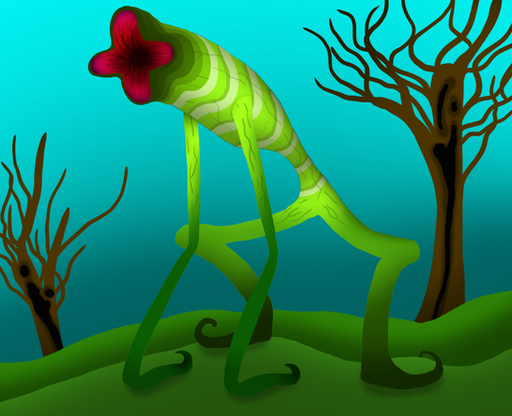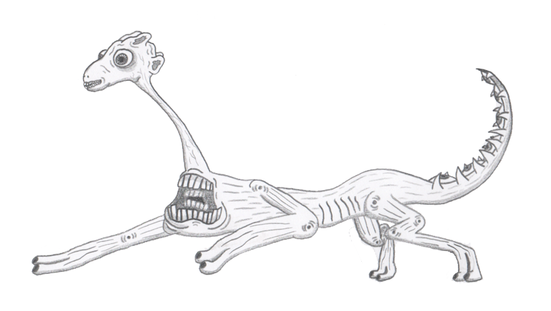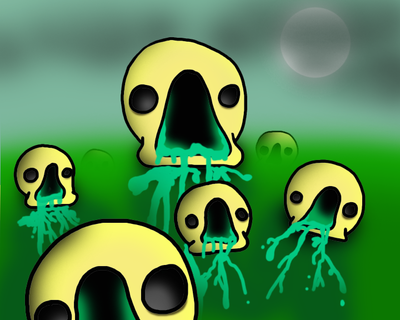HOME | DD
 detectOplasm — Astracides
detectOplasm — Astracides

#darksack100 #alien #alligator #bulb #creaturedesign #crocodile #monster #repository #scorpion #swamp #vault #yellow #astracides
Published: 2022-08-11 18:19:05 +0000 UTC; Views: 802; Favourites: 9; Downloads: 0
Redirect to original
Description
Wanted to draw something quick but then spent half an hour on the description anyway sooooooAstracides are entities found in select earth climates. Unlike many other enigmatic cryptids, they are not monsters (born of limitless potential origin) or mutations (exacerbations of existing natural organisms by outside forces). Instead, these comparatively unassuming creatures are extraterrestrial in nature. However, it is their quaint behaviors and ready integration with our ecosystem that make Astracides perhaps even more peculiar than their zanier cousins.
Astracides are confirmed to be living, evolving creatures who's origins can be traced to beyond the stars. Despite this, they have cells almost indistinguishable from mammals and require much of the same nourishment: oxygen, hydrogen, protein, calcium, sugar, and more. They can readily starve, become ill, or be predated upon, and while they are often considered a hardy breed, they are by no means successful enough to become dominant species. This begs the question of how such entities came to our world, why they are so like our own forms, and what they ultimately want. Many theories have been made to attempt to answer this mystery.
Astracides are commonly nicknamed "Swamp Scorpions", though they are rarely ever seen in such areas (being commonly outcompeted by alligators and crocodiles). Babies are born into lakes, reservoirs, and still bodies of water typically found in temperate or tropical climates. At this stage, they are legless, eyeless, and swim in a tadpole-like manner, feeding on fish, worms, and plants. As they grow in size, they also grow in weight. Soon, they begin to rest themselves on the bottom of their watery habitat and adapt to ambush strategies they will keep for the rest of their lives.
Adult Astracides grow 6 legs that enable them to cling to the sand, silt, and stone at the bottom of their territory. They also develop a small but well-developed pair of eyes on their snouts, no longer expressly relying on chemosense. These new adaptations allow them to migrate out of the water, and they may do so if conditions become unfavorable. Once fully mature, the creatures will seek shallower, flowing bodies of water, preferably rivers or streams. Some prefer water only deep enough to submerge their lower bodies, allowing their tails to breach the surface. Others look for water much deeper and submerge themselves completely. Because of these specific preferences, multiple Astracides may group up in a single desirable area.
At this point, Astracides are far more sessile, though their exact behaviors vary according to their environment. Astracides in shallower waters are usually more timid, waiting for small meals to come along and springing to catch them. They take advantage of the shallow water to cut off possible avenues of escape, forcing chased prey to run opposite their lunge and against the current. Larger creatures will spook them, causing them to issue a threat response. Threatened shallow-water Astracides swish their tails and splash water at their would-be aggressor. If this fails, they secrete a burning chemical compound from their tails and splash the now toxic wave at their foe, aiming for the face. If backed into a corner, they resort to their bone-crushing jaws. Though they will almost never attack large creatures unprovoked, defensive bites can lead to frenzies as they taste blood.
Deep water Astracides function more like crocodiles. They will subsist on small swimmers if necessary, but are far less hesitant about taking on large prey. Both groups of Astracides know which creatures swim well and which do not, and deep water versions eagerly assault entities larger than themselves. These acts of predation are generally quite lazy; the creatures usually opt to bite a limb and sink, letting their bulk and suffocation do the rest. If necessary, they will try to break as many bones as possible, then wait out the result. Deep water Astracides have such a taste for land flesh that they might migrate out of the waters and simply hang near them for better access to both land and sea. These zealous land Astracides are quite dangerous up close, but easily outrunned.
Despite their formidable bulk and weaponry, Astracides have weaknesses like all other animals. They are not the strongest or fastest creatures of the forest, and face competition from sharks, bears, crocodiles and other animals that might fill their niche better than they do.
Biologists and Xenobiologists alike are unsure exactly what "goal" Astracides have, if any. They appear to be tailor-made to inhabit this planet, but by who, and for what reason? Some have suggested that they are invader agents, but the species blends seamlessly into our own food web and has not caused any imbalances. Currently the most credible theory is that Astracides are neither an attacking force nor an expeditionary one, but simply beings flung from a distant dying planet in the hopes that some genetic information from their world can be saved. Indeed, Astracide biology seems to contain a great many cells which serve no apparent purpose other than storing DNA-adjacent information for other alien anatomical plans. Perhaps one day the species is meant to incorporate this information into its genome and evolve into a complete alien ecosystem. Or perhaps the Astracides are simply the last messengers from another world, allowing us to acknowledge that world lived and providing us a vault of biological data for a place once much like our own.




















